-
-
Sales: 1300 219 875
-
Service: 1300 195 482
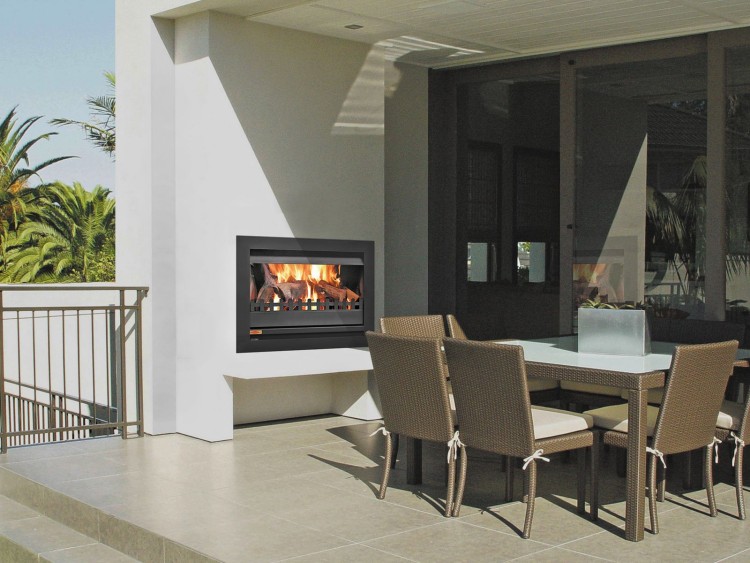
When the weather turns chilly, few things are more inviting than gathering around a cosy heat source outdoors. But how should you decide which outdoor heating option is right for you? From traditional outdoor wood heaters to more modern solutions like gas or electric heating, there are a range of choices to consider.
In this blog post, we’ll compare outdoor wood heaters with other common outdoor heating options, tackle questions about efficiency and safety, and highlight how a reliable supplier such as Jetmaster can help you choose, install, and maintain the ideal outdoor heating solution.
Let’s start by taking a closer look at outdoor wood heaters. These heaters, also sometimes called wood-burning fire pits or wood-fired fireplaces, have been a mainstay in many Australian backyards for decades. But what exactly are they, and why do so many people choose them?
Outdoor wood heaters typically feature an enclosed or semi-enclosed combustion chamber where you burn wood for heat. Some designs are built directly into a fireplace-style structure, while others are freestanding, such as chimineas or small steel pits. The heat generated by burning wood warms the surrounding area, creating a cosy environment ideal for outdoor entertaining or simply enjoying a peaceful evening under the stars.
Wood heaters function by burning logs or wood pellets (depending on the model). Modern outdoor wood heaters can be highly efficient, with carefully designed combustion systems that maximise heat output. They often feature adjustable vents or dampers that allow you to control the rate of burning, which in turn regulates heat output and fuel consumption.
Need outdoor fireplaces in your Mornington Peninsula, Ferntree Gully, Hampton, or Lilydale home? Crafted with high-quality materials, our universal outdoor wood fires uphold our commitment to providing premium outdoor heating solutions. Plus, they are energy-efficient so you achieve maximum heat output without compromising on your bills or contributing significantly to carbon emissions.
Gas heaters are another popular choice for outdoor warmth. They can come in various designs, such as stand-up patio heaters or built-in gas fire tables.
Let’s take a look at how wood heaters match up against gas heating options.
One of the biggest considerations between wood and gas is the cost and availability of fuel. Wood can be relatively inexpensive in some regions, especially if you have access to local timber. However, for urban dwellers or those without a reliable wood supply, purchasing quality firewood can add to the expense, and you’ll need somewhere to store it.
On the other hand, gas heaters require either natural gas (if you have a mains connection) or bottled LPG. Natural gas can be convenient, as you don’t need to buy or transport wood. However, fluctuations in gas prices can impact ongoing costs. Bottled gas also needs to be refilled, which is an added hassle, though the convenience factor can be higher if you already use gas elsewhere in your home.
Modern outdoor wood heaters can achieve high levels of efficiency, but this efficiency relies on proper operation—using well-seasoned wood, ensuring good airflow, and regularly maintaining the unit. Gas fireplaces, meanwhile, have the advantage of a clean, consistent fuel source. You simply light it and select a preferred heat setting.
In terms of raw heat output, both wood and gas can effectively keep outdoor gatherings warm. However, many people find the radiant heat of a wood fire feels more “enveloping” compared to gas, which often radiates heat from a single source or uses convection to circulate warm air.
Properly managed wood heaters can be environmentally friendly, as wood is a renewable resource. However, burning wood does produce smoke and some emissions, which can contribute to localised air pollution if the wood is not fully seasoned or if the heater is poorly maintained. Gas, while cleaner in terms of smoke, is a fossil fuel, which raises its own environmental concerns in terms of carbon emissions over the long term.
Looking for a gas fireplace in Dandenong, Launceston or Geelong? With a variety of sizes and depths, our Jetmaster range can fit into virtually any residential or commercial space.
Electric heaters—especially those designed for patios and outdoor spaces—are another key competitor in the outdoor heating market. They come in a variety of forms, including infrared radiators that can be mounted on walls or ceilings.
Electric heaters tend to have lower upfront costs. They’re often cheaper to buy compared to a high-quality outdoor wood heater. But electricity prices can be a major downside, particularly if you’re running them for extended periods.
Additionally, powering an electric heater outdoors may require accessible electrical points, and if you need extension cables, you have to consider the safety and aesthetics of cords running across your patio.
Searching for electric fireplaces Richmond, Bendigo, or Ballarat? Our electric fireplaces utilise innovative technology that presents a realistic flame effect, efficient heating, and easy operation. And oh, we also provide exceptional customer service, from the point of purchase to installation and aftercare.
Most electric outdoor heaters direct infrared radiation to warm the people and objects in front of them rather than heating the air. This can be both a pro and a con—it means you feel the warmth almost immediately when you’re in the “heat zone,” but step away and you may quickly feel the chill. Wood fires, by comparison, radiate heat in all directions, creating a focal point that tends to encourage people to gather around.
While some modern electric heaters are quite sleek and discreet, they can’t replicate the visual appeal and scent of burning wood. For some homeowners, an electric heater doesn’t offer the same level of charm or ambience. If you’re looking for a more sensory experience, a real wood fire often fits the bill much better.
Looking for options when it comes to your electric fireplaces? Check out our product categories here
You Might Also Like: How Electric Fireplaces Work: A Beginner’s Guide
If you’re sold on the allure of burning wood, you might wonder how an outdoor wood heater compares to other wood-based heating solutions, such as wood-fired pizza ovens or fire pits.
There’s a big overlap in the functionality of a wood-fired pizza oven and a standard outdoor wood heater. The main difference is that pizza ovens are primarily designed for cooking. They do produce heat, and standing next to one on a cold evening can be pleasant, but they’re typically enclosed and direct most of their heat inside to cook food. If you love entertaining with homemade pizzas or roasted dishes, a pizza oven can be a delightful addition, but it may not offer as much radiating heat for everyone around it.
Fire pits are an increasingly popular outdoor feature. Some are simple bowls or rings, while others are elaborate, design-forward installations. Essentially, a fire pit is a more open version of an outdoor wood heater. While traditional fire pits can produce significant smoke that may affect comfort, modern smokeless designs like the VisionLine outdoor fire pit offer innovative solutions that minimize this issue through advanced airflow technology. Fire pits are excellent for social occasions, as people can gather around, toast marshmallows, and enjoy the glow. However, a less enclosed fire pit can sometimes let heat escape more readily, so you may not get as much warmth efficiency unless you’re very close to the flames
Originating from Mexico, chimineas are often made of clay or cast iron, with a distinctive bulbous shape and a chimney at the top. They work similarly to a wood heater, but they usually direct heat out from a single opening. This can be cosy if you’re sitting right in front of it, but less ideal for large gatherings, as heat distribution is more directional.
RELATED: Which Fireplace Emits More Heat: Gas or Wood
Any heating option—wood, gas, or electric—comes with its own set of upkeep requirements. Being aware of these can help you choose a system that suits your lifestyle.
One of the chief concerns about burning wood is the risk of accidental fires and smoke inhalation. However, these risks can be minimised with the following guidelines:
Gas heaters can pose risks if there are gas leaks, so regular inspections are essential. Electric heaters, on the other hand, must be protected from rain and moisture to prevent short circuits. Whichever heater you choose, it’s best to purchase from reputable suppliers and follow manufacturer guidelines.
| Heater Type | Upfront Purchase Cost | Ongoing Operational Costs | Potential Installation Costs |
| Outdoor Wood Heaters | High-quality wood heaters with good insulation and air-flow controls can sometimes cost more initially, but there is a wide range of prices. Basic fire pits can be quite affordable, whereas advanced fireplace inserts and custom masonry jobs can be more expensive. | If you have access to free or cheap firewood, operational costs can be minimal. Otherwise, budget for purchased firewood each season. | If you want to reduce smoke in an enclosed area, you may choose to install a chimney or flue system. |
| Gas Heaters | Freestanding patio gas heaters are often mid-range in cost, whereas built-in gas fireplaces or those integrated into outdoor furniture can be pricier. | Natural gas or LPG costs can vary widely by region. | If you opt for a built-in gas heater and don’t already have a convenient gas line, you’ll need to budget for running new gas piping. |
| Electric Heaters | These can be relatively inexpensive to buy, especially if you only need a simple mounted heater or free-standing unit. | Running costs can add up if you use your electric heater for long periods, especially at higher power settings. | Outdoor electrical installations might require a professional to ensure safety and compliance with local regulations. |
For the eco-conscious homeowner, environmental impact can be a decisive factor. Let’s compare the environmental footprint of the three main types of heating systems.
It’s always a good idea to consult with a professional when making a significant purchase, like an outdoor heater. Professionals can:
Outdoor wood heaters stand out among other heating options for their ambience, comforting warmth, and sense of tradition. While gas and electric heaters have their advantages—such as immediate heat control and reduced smoke—nothing quite matches the appeal of a real wood fire if you value a truly atmospheric experience. From cost considerations and environmental impact to maintenance and safety, each heating solution offers distinct benefits and trade-offs.
If you’re leaning towards an outdoor wood heater and want expert advice, Jetmaster Vic is here to help. With years of experience providing top-quality indoor and outdoor fireplaces, heaters, and accessories, we’re well-equipped to guide you through the entire process—from selection to installation to ongoing support. Our friendly, knowledgeable team can answer all your questions so you can enjoy your new outdoor heating solution with absolute peace of mind.
Get in touch with our team today to discuss your options. Our team is on hand to provide expert guidance and offer personalised recommendations.
The next steps:
Sales:1300 219 875
Services:1300 195 482

Open vs Closed Fireplaces: A Comprehensive Guide for Australian Homeowners
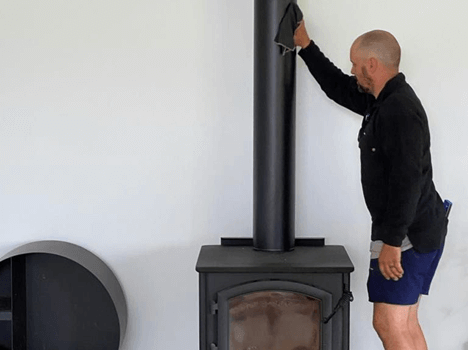
Essential Fireplace Maintenance Tips to Keep It Clean and Efficient
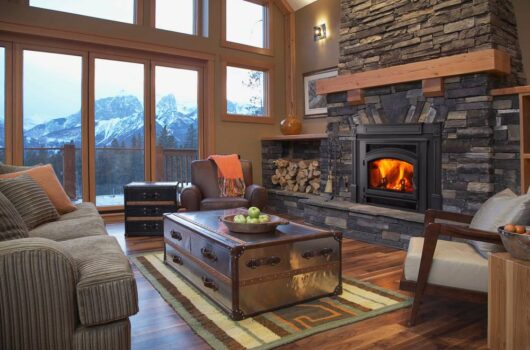
How to Safely Use an Indoor Fireplace in Your Home
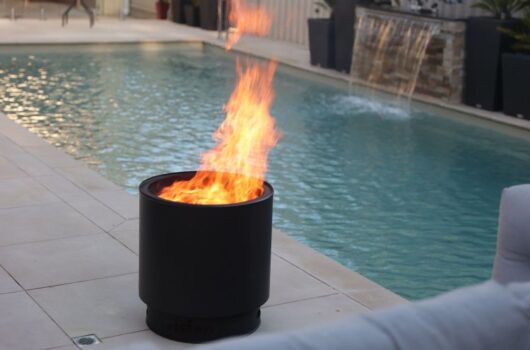
Outdoor Wood Fireplaces vs. Gas Fireplaces: Which One Should You Choose?
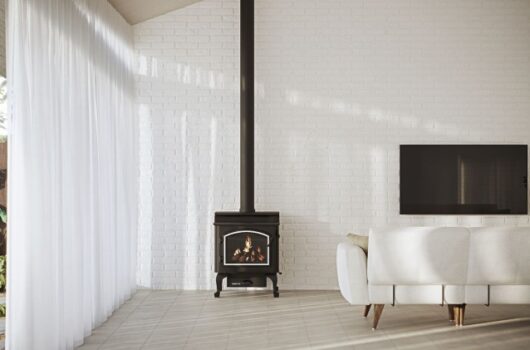
Are Wood Burning Fireplaces Safe? Evaluating Their Safety